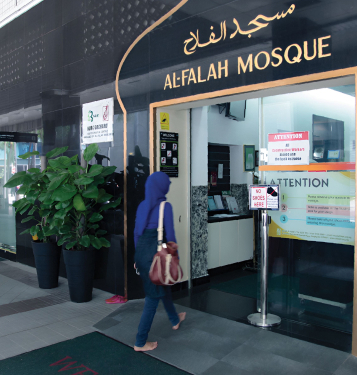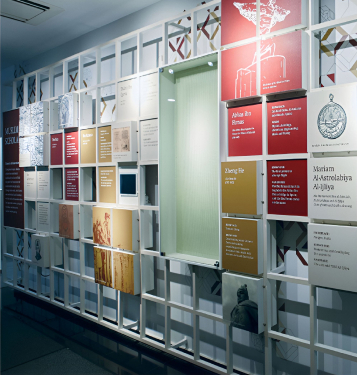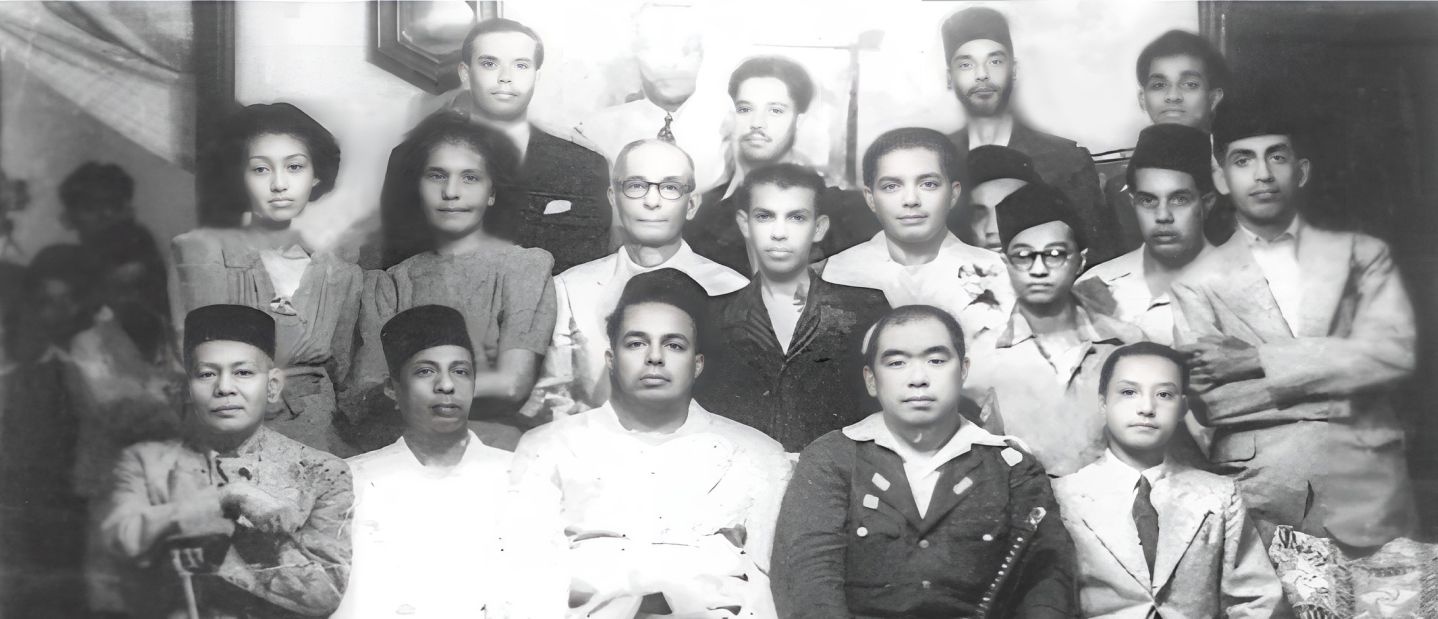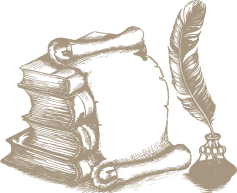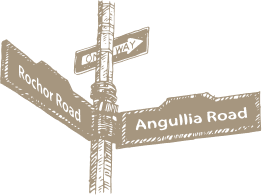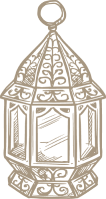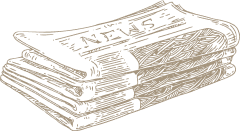The Angullia Family has had remarkable threads that have woven together over time. From significant locations chosen with the intent to pivotal community contributions, this chapter unearths the family's profound impact on the urban landscape and its deep-rooted connections with various aspects of Singapore's history.
Road
The historical Angullia Road portrayed in a 1943 Japanese map of Syonan-To has been overlaid onto a modern Street Directory map. The precise location was Rochor Centre, up until April 2017, before being demolished in 2019. Its transformation was driven by the government's strategic plans, marked by the inception of the 21.5km North-South Corridor (NSC) and the development of the Ophir-Rochor Corridor.
A 1979 map shows Angullia Road on the bottom left, adjacent to Queen Street. AMS Angullia was a Municipal Commissioner of the Rochor area.
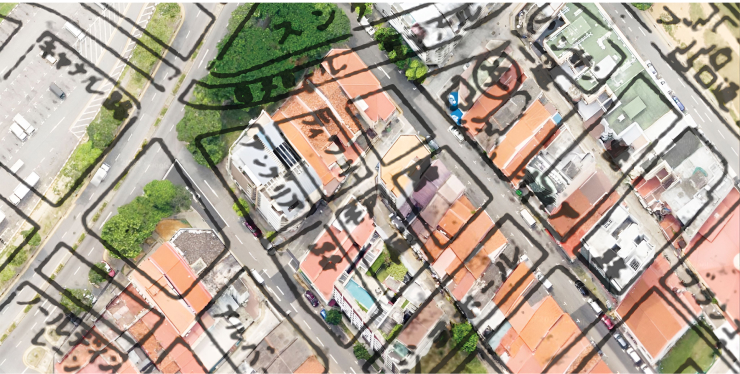

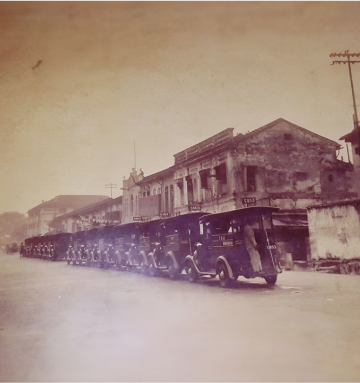
Street
MSE Angullia's decision to establish his residence on Bencoolen Street can be attributed to several factors. The locality boasted the presence of Bencoolen Mosque and a vibrant Muslim community. Positioned on the outskirts of the city, it provided convenient access to his business operations at Collyer Quay and Robinson Road. Moreover, its strategic location near the bustling Rochor District added to its appeal.
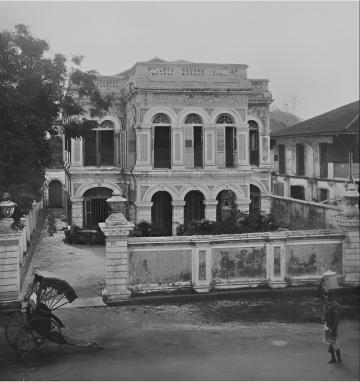
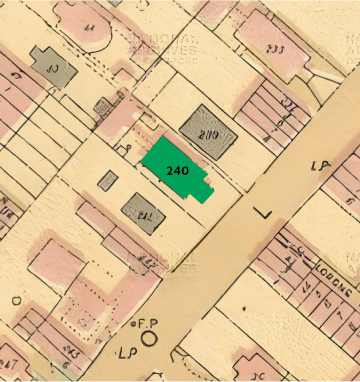
Park Road
The Estate was developed by AMS Angullia in the 1920s. Perched atop a hill at 363 Orchard Road, it featured AMS Angullia's mansion accessible via a long driveway. Complementing the main residence were nine other bungalows, outhouses and stables. Encompassing three acres, the estate also had a park and playground open to the public. In 1933, Angullia Park Mosque was completed at the estate's corner, and it quickly became the primary mosque of the district and neighbourhood. This historic area spanned from the present-day Hilton Hotel to Liat Towers and Paterson Road.

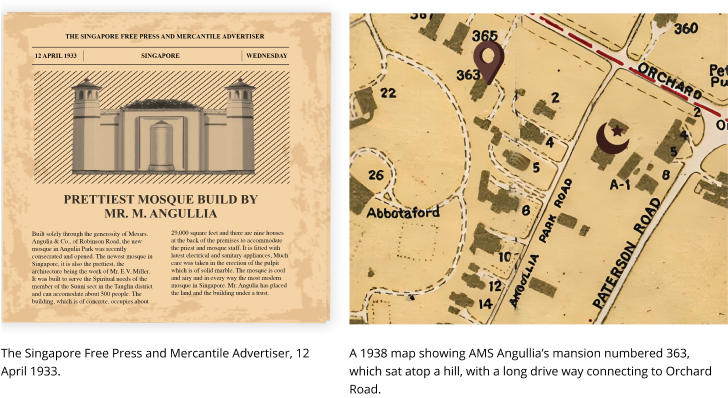
In wanting to improve the living conditions of Muslims in Singapore through charity and funding, AMS held various titles including President of the Moslem Association in 1915, a member of the first management committee of the Muslim Missionary Society of Malaya (the precursor to Jamiyah Singapore) and was a founding member of Muslimin Trust Fund Association (MTFA).
He became a trustee of the Masjid Bencoolen (formerly Hanafi Mosque) in 1906 and the Indian Muslim Rest House, built in 1939 to shelter the urban poor. Recognising the power of education, he established the M.E. Angullia Scholarship for needy Muslim boys using funds from his father's wakaf estate.
AMS Angullia's standing was so respected that he assumed the role of Japanese Consul in Singapore even before the country established its official representation here. This position was bestowed upon him due to his notable status as a leading importer of goods from Japan. The spirit of benevolence flowed through generations, as his son Kassim Angullia upheld amicable relations with the Japanese during wartime. Kassim's contributions to the Nippon Red Cross reflect the family's exceptional philanthropy, which transcended religious and racial boundaries.
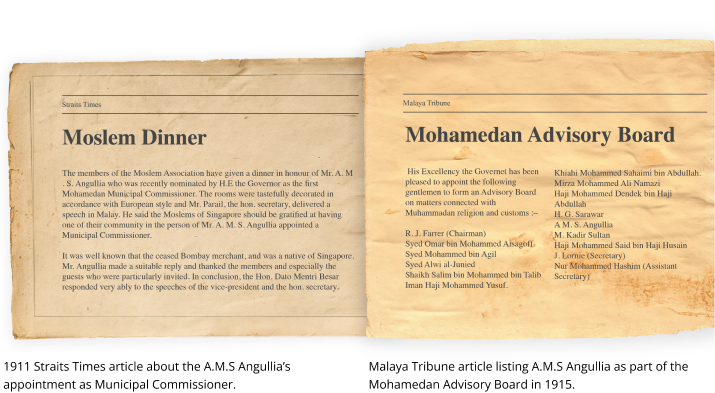
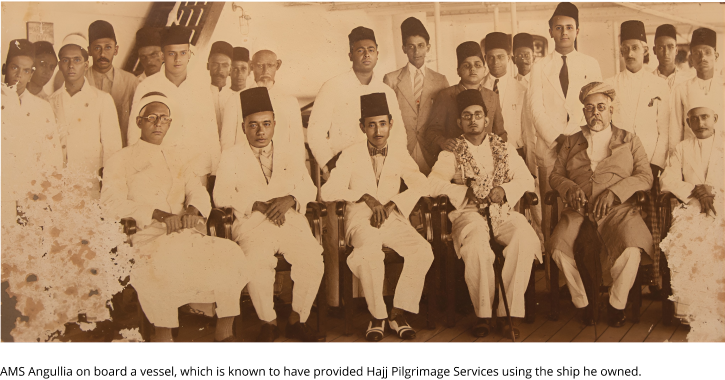


Located at Hillside Drive, off Upper Serangoon Road, the Haji Yusoff Mosque was built in 1921 on land bequeathed by AMS Angullia. Established as a significant landmark in Hougang, the mosque has been a spiritual and social hub for residents, including those from former Malay-Muslim villages such as Kampong Haji Sirat at Jansen Road.
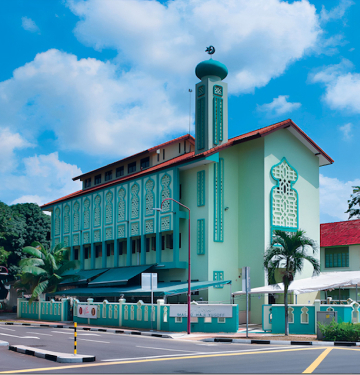
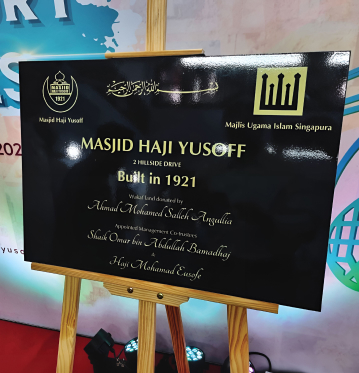
In 1981, Hajjah Rahimahbi Angullia, daughter of AMS Angullia, donated $1.6 million towards the redevelopment of Kebun Limau Surau into a mosque as a tribute to her deceased daughter. The mosque was subsequently renamed in honour of Hajjah Rahimabi Kebun Limau in 1984. The funds for the donation were raised from the sale of her residence on Angullia Park Road.

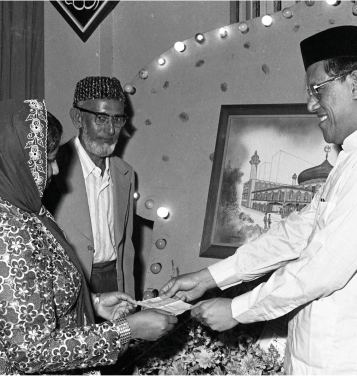
Hajjah Mominbi Bte Ahmed Angullia made a generous donation of $800,000 to Jamiyah Singapore, a Muslim Missionary Society, in memory of her late husband, Haji Ahmed Eusoof Piperdi. The donation was used to build a prayer hall at the organisation's headquarters.
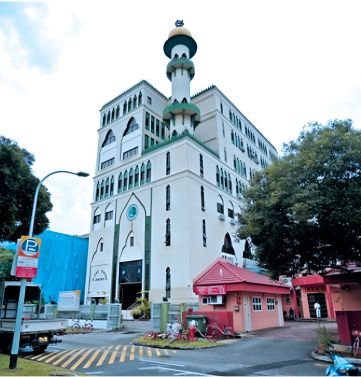

Masjid Al-Falah was established in 1987 to cater to the Muslim community working and living in or visiting the Orchard Road area. The plan to establish Masjid Al-Falah was developed in the 1980s, when Angullia Park Mosque was slated for demolition, to ensure that Muslims living and working in Orchard Road would continue to have a prayer and gathering place.
